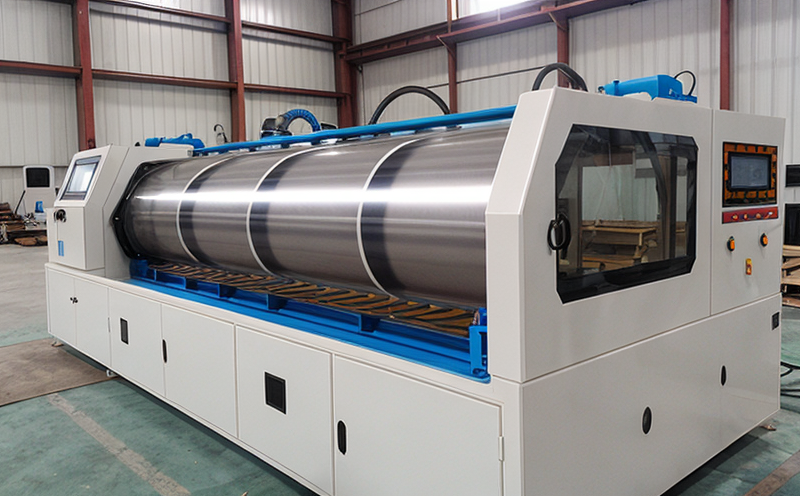JIS L1926 Light resistance of coated textile materials
The JIS L1926 standard is a key specification in Japan that addresses light stability and color fastness for coated textiles. This test evaluates the durability of coatings on textiles when exposed to ultraviolet (UV) light, simulating conditions found in outdoor environments such as sun exposure. The primary goal of this test is to ensure that the coating remains intact and does not degrade, thereby maintaining the aesthetic appeal and functionality of the textile.
The test method typically involves exposing coated specimens under controlled light sources that mimic sunlight. Specimens are usually exposed for a specified duration (often 50 hours), after which they undergo color change evaluation using standardized colorimeters or visual comparison to a control sample. The results help manufacturers ensure their products meet quality and performance standards, especially in sectors like automotive textiles, outdoor gear, and architectural fabrics.
Understanding the importance of light resistance is crucial for industries where textiles are exposed to natural elements. For instance, automotive upholstery requires materials that can withstand prolonged UV exposure without losing color or texture integrity. Similarly, outdoor sports apparel needs coatings that maintain their protective properties over time. This test plays a vital role in ensuring product durability and compliance with international standards.
The JIS L1926 method is particularly relevant for textiles used in sectors where aesthetics and functionality are paramount under harsh environmental conditions. It ensures that the materials perform as expected, enhancing customer satisfaction and brand reputation. The standard also supports sustainable practices by helping manufacturers choose durable coatings that reduce waste due to premature degradation.
In summary, JIS L1926 testing is essential for ensuring product longevity in environments where textiles are exposed to UV light. By adhering to this test method, manufacturers can produce high-quality products that meet both performance and aesthetic expectations. This ensures customer satisfaction and enhances brand reputation within competitive markets.
Scope and Methodology
| Test Parameters | Description |
|---|---|
| Specimen Preparation | Coated textile specimens are cut to standard dimensions (typically 150 mm × 150 mm). |
| Light Source | Standardized UV-A lamps that mimic the spectral distribution of sunlight. |
| Exposure Time | Specimens are exposed to light for a minimum of 50 hours, with measurements taken periodically during exposure. |
| Color Change Measurement | Post-exposure color change is measured using a spectrophotometer. |
The JIS L1926 light resistance test involves exposing coated textiles to UV-A radiation for extended periods. The exposure conditions are carefully controlled to simulate real-world environmental factors. After the specified exposure time, the color change of the specimens is measured using a spectrophotometer. This allows for an objective comparison with unexposed control samples.
The methodology ensures that any changes in appearance or performance can be attributed directly to UV light exposure rather than other variables. The test results provide critical data for quality assurance and product development, helping manufacturers identify optimal coating formulations and processing parameters.
| Acceptance Criteria | Description |
|---|---|
| Total Color Change (ΔE) | A total color change of less than 3.0 is considered acceptable for most applications. |
| Color Difference (ΔE) | Any individual component (ΔE*ab) exceeding ±1.5 may indicate unacceptable degradation. |
The acceptance criteria are based on the total color change and individual components of color difference. These thresholds ensure that the coated textiles retain their original appearance after exposure to UV light, maintaining both aesthetic appeal and functional integrity.
Why Choose This Test
Ensures compliance with international standards (JIS L1926).
Provides objective data for quality assurance.
Promotes sustainable practices by reducing waste due to premature degradation.
Supports product development and optimization of coating formulations.
Aids in meeting customer expectations for durability and performance.
Facilitates competitive advantage in markets demanding high-quality textiles.
Choosing the JIS L1926 light resistance test offers several advantages. It provides a standardized method to evaluate the effectiveness of coatings under UV exposure, ensuring that products meet international quality standards. This testing approach supports sustainable practices by minimizing waste from premature degradation, thus reducing environmental impact. Additionally, it plays a crucial role in optimizing product formulations and enhancing customer satisfaction.
Competitive Advantage and Market Impact
The JIS L1926 light resistance test is particularly advantageous for manufacturers operating in competitive markets where product longevity and performance are critical. By ensuring that coated textiles maintain their appearance and functionality under UV exposure, this test provides a clear competitive edge. It allows companies to differentiate their products based on superior durability and quality.
Moreover, compliance with international standards like JIS L1926 enhances brand reputation and trust among consumers. In sectors such as automotive textiles, outdoor gear, and architectural fabrics, where exposure to natural elements is common, this test ensures that the materials meet stringent performance requirements. This not only boosts customer satisfaction but also opens up new market opportunities.
The test's impact on sustainability cannot be overstated. By reducing waste due to premature degradation, it supports environmental responsibility while maintaining high product quality. In a world increasingly focused on sustainability and eco-friendly practices, this advantage can significantly enhance a company’s reputation and market position.





